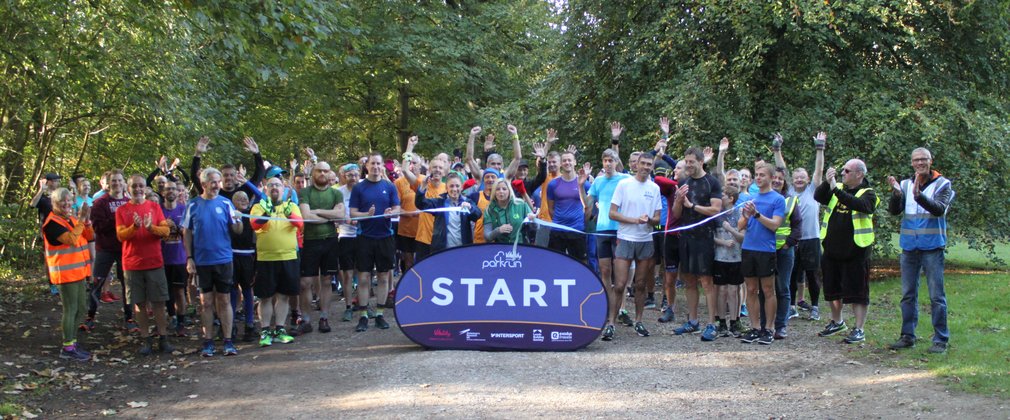Let’s imagine you’re in charge of a body like Sport England. You have tens of millions of pounds from the lottery each year. It’s your job to spend this on grassroots sport, so that more people benefit from physical activity. What would you do with the money? Are you sure it would work?
It’s a hard question. And it reminds me that successful ventures aren’t always top-down and big-budget, run from the centre. Sometimes the best enterprises are run by enthusiasts who are driven to get things done.
This blog is about one of those – parkrun. In particular, I’ve always been interested to see how parkrun releases something extra from everyone involved. Staff, spectators and volunteers all seem to happily put in more time and energy than they’re asked to. Some experts call this ‘discretionary effort’, and it’s worth unlocking whenever you can.
I thought I’d look at how ‘discretionary effort’ comes about. It’s useful to know this if you’ve ever led a team, run an event, or just want to get people to participate in something you’re passionate about. We’ll look at the way parkrun works to make this happen, as its features can be applied to many other times and situations.
People like working together when there are clear benefits and a simple goal.
I don’t think parkrun would have worked if its plan was to get volunteers out of bed on a wet Saturday morning to build their community. Instead, they set out to build something simple to help people run 5k. That proved to be clear and appealing to enough people across the UK to make it work. The togetherness, neighbourhood-building and mental health benefits all follow from people being passionate about running, jogging and walking.
Consistency is important.
Despite being run by volunteers and taking place in hundreds of different places, every parkrun worldwide feels the same. It doesn’t matter where you are or which week you turn up. This helps people find a routine around the event that works for them. It includes simple things like when to get up, how you get there and who to meet afterwards.
When something becomes typical within a routine, it’s never as tough as we first thought. Even that first daunting 5k. So parkrun drives repeat activity quickly as it’s something that doesn’t need lots of decisions. It appeals to our personal autopilots.
Make the barriers to entry really low.
The parkrun message is “come and join us at 9am.” All you have to do beforehand is register on their website. It’s free, so you don’t need to set up a direct debit. You don’t need to run with coins or a card. Your running gear doesn’t matter, as hardly anyone has the latest trainers. It’s just not the vibe.
All this reduces friction and makes it more likely that people turn up and get involved. If people want to run, they can just run. Some have milestone T-shirts for doing 10, 50, or more runs. But this doesn’t depend on whether they have volunteered or not. There’s no sense of pressure or obligation to do more if they don’t want to. This has helped keep parkrun welcoming.
Spread leadership among those around you.
Each parkrun relies on a volunteer team to make it happen. Bushy Park in London is the biggest UK parkrun and often welcomes over a thousand runners – that needs over fifty volunteers. They range from those marshalling the course to timekeepers and ‘tail-runners’ (no-one finishes last at parkrun). All of these are a vital part of the whole, and they spread out the responsibilities. In this way, parkrun is actively building leadership, encouraging people to get involved and own their local event.
This approach doesn’t need a leadership team for each run location. The roles are clear, so volunteers can learn quickly and jump in and out of different things. There’s always someone to help, and no real hierarchy.
Design the principles and stick to them.
Given the success of parkrun, it’s easy to take it for granted. To think that it was just waiting to happen, or that anyone could have done it. But that’s not true. This is something which has become a massive public health success, but began with one starter event that snowballed. Governments could learn.
The parkrun team agreed on some core principles and made clear decisions about how their organisation would work. They stuck to their guns on never charging people to take part – even when a local council made that difficult. Keeping parkrun free means they always feel open and available to everyone, in every community.
The last words
If you want to increase engagement and unlock the discretionary effort in your team, parkrun provides valuable insights. Whatever your project or initiative, I’m sure there’s something we can learn from how they do things. Remember too that the most successful public health initiative in the last twenty years started with a group of friends running around their local park. It’s enough to make you wonder if anything is possible.
About parkrun
Back in 2004, an accomplished runner called Paul Sinton-Hewitt organised a run in London’s Bushy Park. He was injured and had recently lost his job. As much as anything, he wanted an opportunity to meet up and chat. Thirteen runners turned up, mostly friends. It was the first ever parkrun.
Paul’s idea was to support participation, so parkrun has never been a race. In fact, average finish times have become slower over the years as a wider cross-section of people have joined in. It now has a home in thousands of locations in dozens of countries, attracting walkers and runners from the age of four upwards. It remains entirely free, staffed by dedicated, selfless volunteers. For many thousands of people, it’s become a keystone habit in looking after their physical and mental health.


